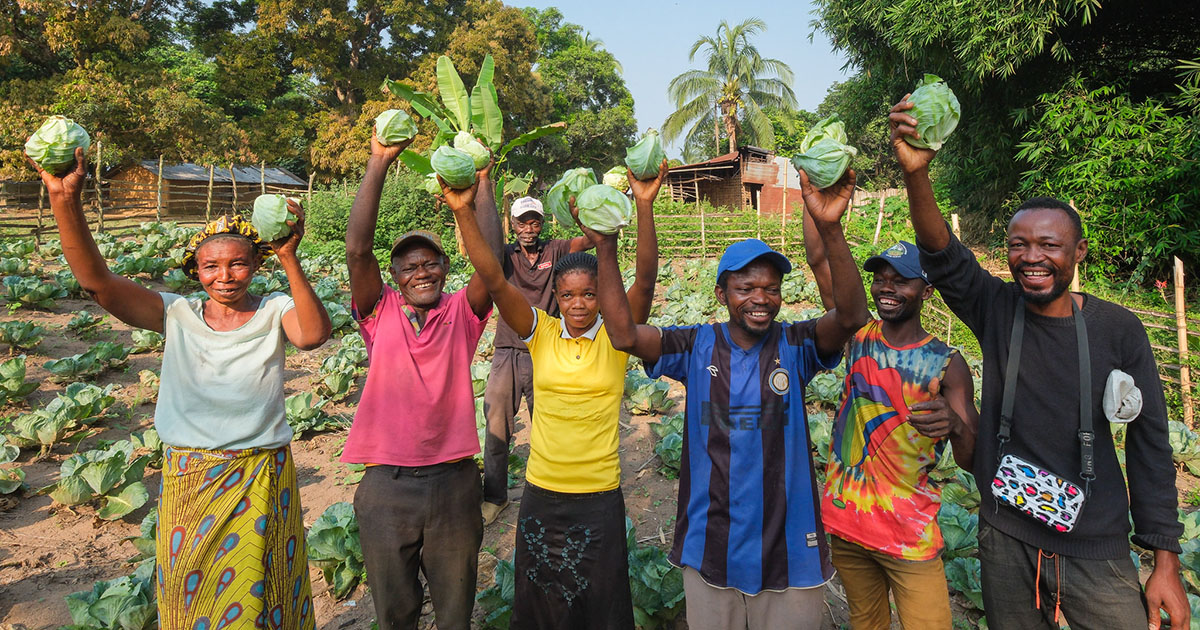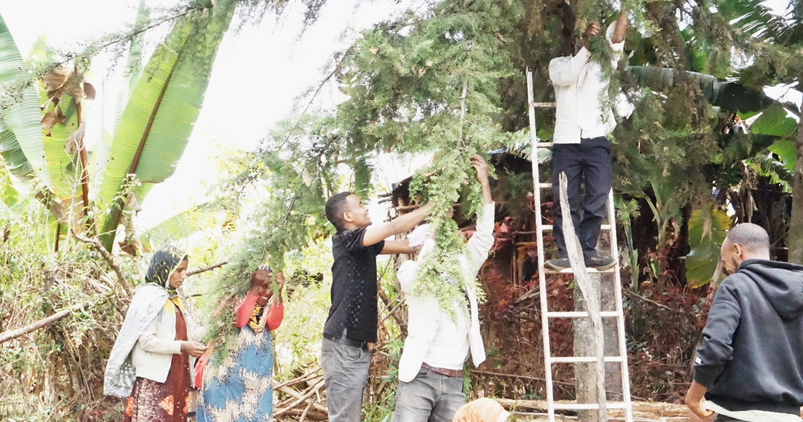The terrestrial water cycle links the soil and atmosphere moisture reservoirs through four fluxes: precipitation, evaporation, runoff, and atmospheric moisture convergence (net import of water vapor to balance runoff). Each of these processes is essential for sustaining human and ecosystem well-being. Predicting how the water cycle responds to changes in vegetation cover remains a challenge. Recently, changes in plant transpiration across the Amazon basin were shown to be associated disproportionately with changes in rainfall, suggesting that even small declines in transpiration (e.g., from deforestation) would lead to much larger declines in rainfall. Here, constraining these findings by the law of mass conservation, we show that in a sufficiently wet atmosphere, forest transpiration can control atmospheric moisture convergence such that increased transpiration enhances atmospheric moisture import and resulting water yield. Conversely, in a sufficiently dry atmosphere increased transpiration reduces atmospheric moisture convergence and water yield. This previously unrecognized dichotomy can explain the otherwise mixed observations of how water yield responds to re-greening, as we illustrate with examples from China's Loess Plateau. Our analysis indicates that any additional precipitation recycling due to additional vegetation increases precipitation but decreases local water yield and steady-state runoff. Therefore, in the drier regions/periods and early stages of ecological restoration, the role of vegetation can be confined to precipitation recycling, while once a wetter stage is achieved, additional vegetation enhances atmospheric moisture convergence and water yield. Recent analyses indicate that the latter regime dominates the global response of the terrestrial water cycle to re-greening. Evaluating the transition between regimes, and recognizing the potential of vegetation for enhancing moisture convergence, are crucial for characterizing the consequences of deforestation as well as for motivating and guiding ecological restoration.
Download:
DOI:
https://doi.org/10.1111/gcb.16644
Dimensions Citation Count:

























